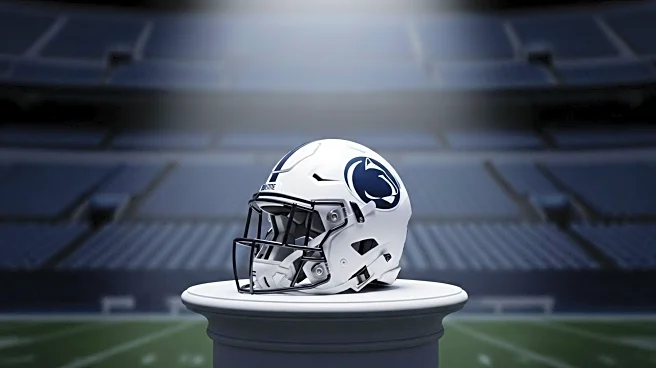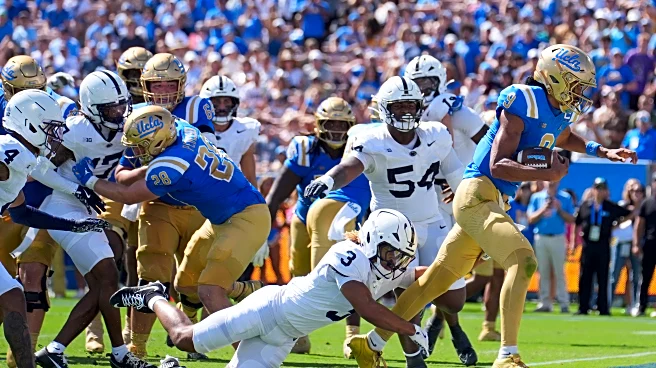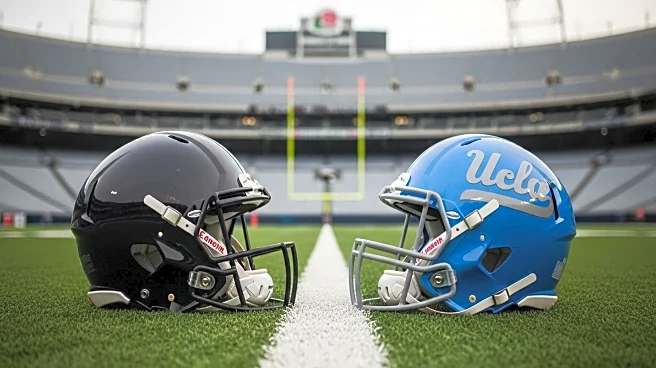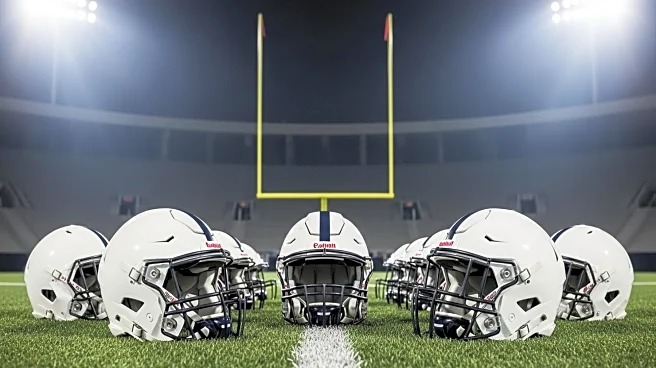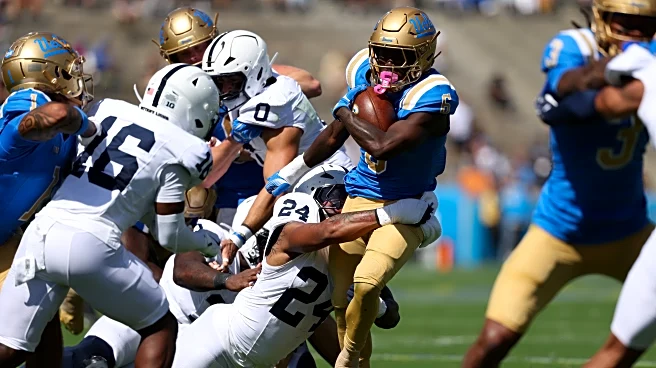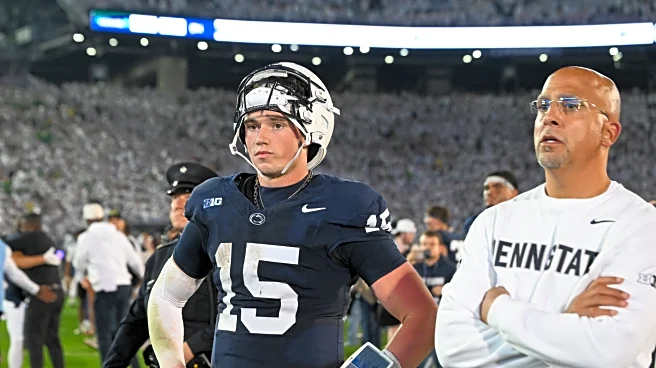What's Happening?
Penn State football is experiencing a challenging season, with recent losses impacting the team's performance. The Nittany Lions, ranked No. 6, suffered a significant defeat against UCLA, losing 42-37 at the Rose Bowl. This loss followed a previous defeat by Oregon, leading to growing dissatisfaction among fans. During the game against UCLA, chants of 'Fire Franklin' were heard, indicating frustration with Head Coach James Franklin. Franklin, who has led the team to numerous successes, faces scrutiny as the team struggles. According to a 2022 financial term sheet, if Penn State decides to terminate Franklin without cause, the buyout would be nearly $50 million. His current contract, which extends through December 31, 2031, includes an annual compensation of $8.5 million, comprising a base salary, supplemental pay, a retention bonus, and a life insurance loan.
Why It's Important?
The potential buyout of James Franklin's contract is significant for Penn State, both financially and strategically. A $50 million buyout represents a substantial financial commitment, which could impact the university's budget and future investments in the football program. The decision to retain or release Franklin could influence the team's performance, recruitment, and overall reputation. For fans and stakeholders, the team's success is closely tied to the coach's leadership, making this a pivotal moment for the program. The outcome could affect the morale of players and fans, as well as the university's standing in collegiate sports.
What's Next?
If Penn State decides to part ways with Franklin, the university will need to consider the financial implications of the buyout and identify a suitable replacement to lead the team. The decision will likely involve discussions among university officials, stakeholders, and possibly input from the fan base. The team's performance in upcoming games will also play a crucial role in determining Franklin's future. As the season progresses, the university will need to weigh the benefits of continuity against the potential for change, considering both short-term and long-term impacts on the football program.

